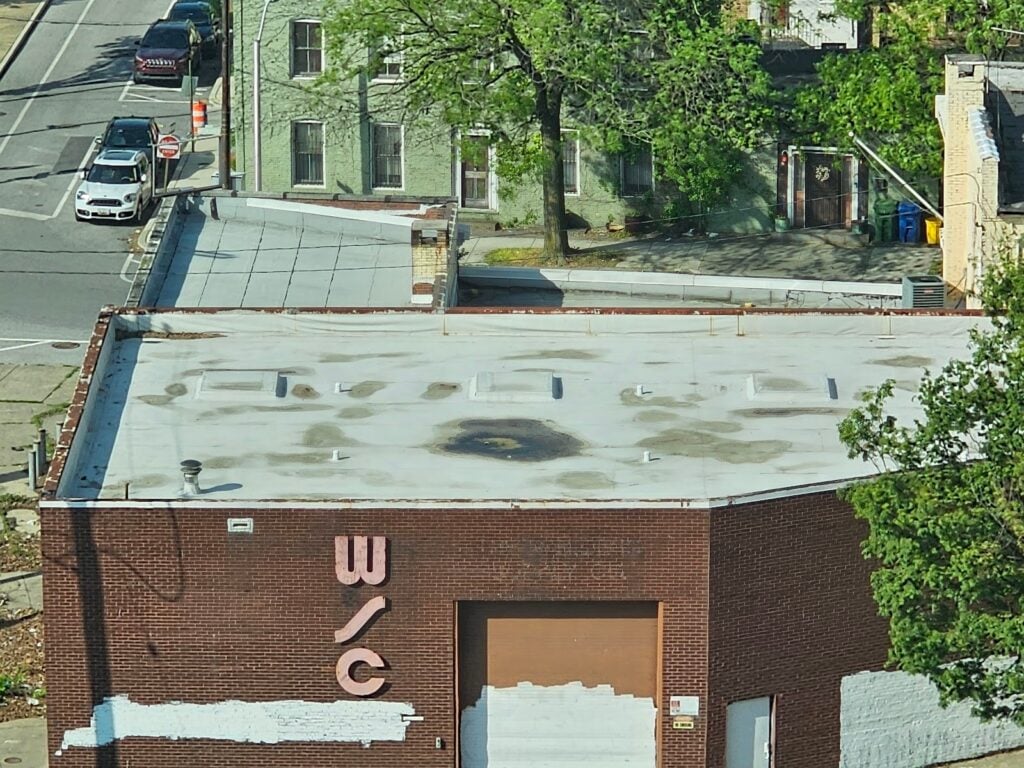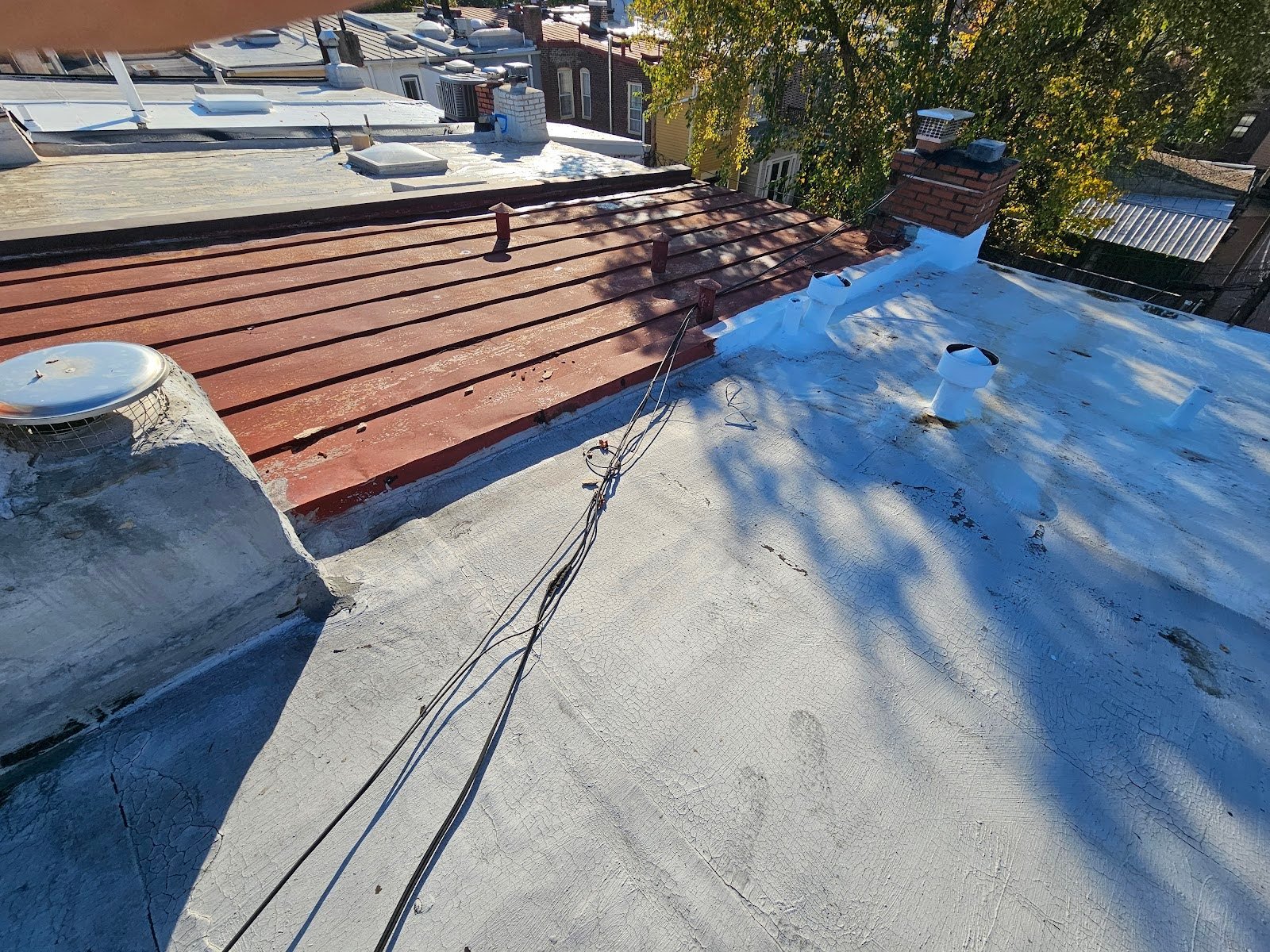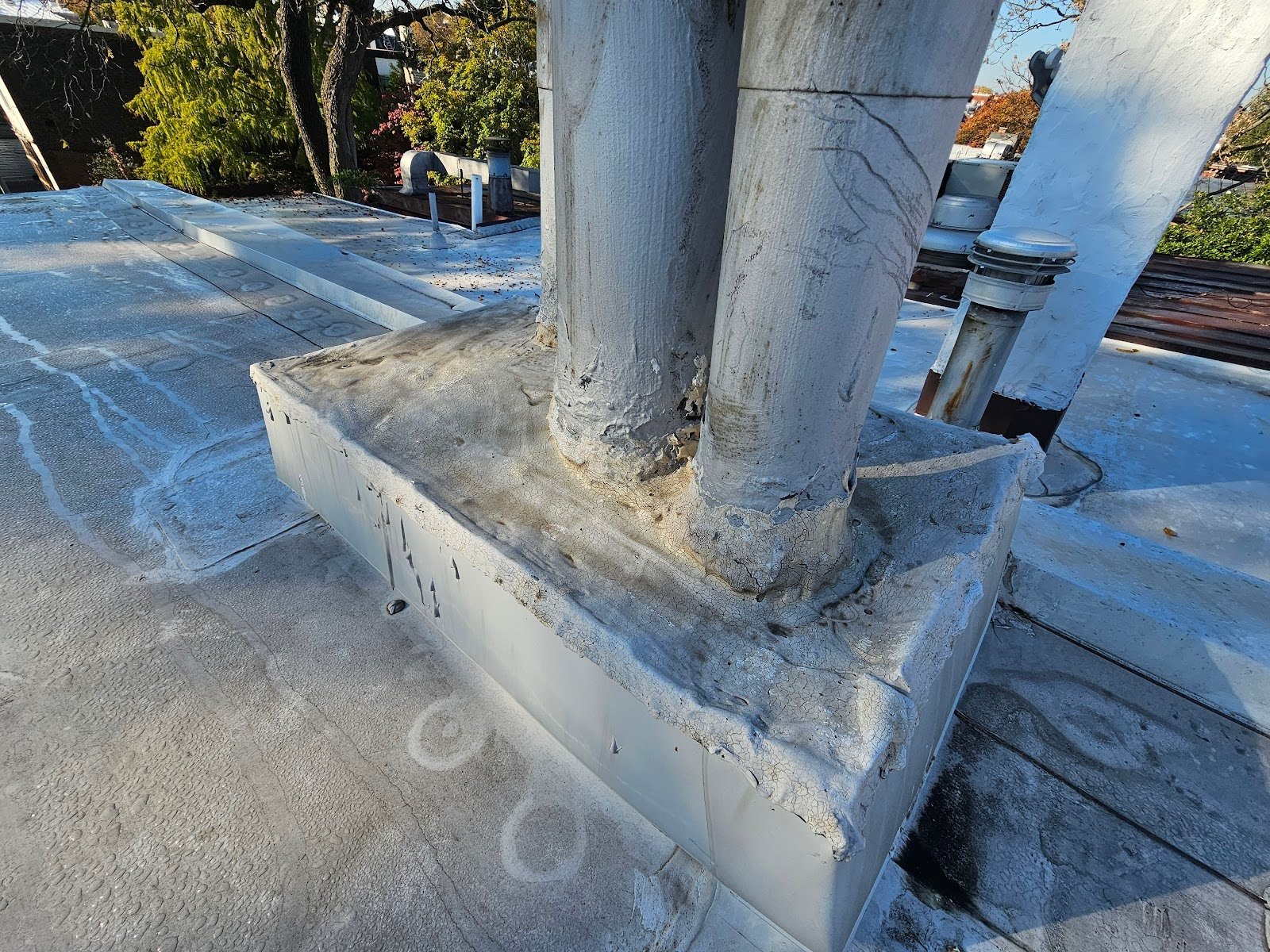Why clogged internal roof drains are a hidden danger
Internal roof drains are not extremely common in most of the properties here in Washington DC. We normally only find internal roof trains in buildings that have particularly wide layouts without a simple slope from the front to the back. We always refer to the typical Washington DC row home type building roofs as flat roofs, but they actually always have or at least always should have a minimal amount of slope. In most cases that slope goes from a slightly higher point in the front to a slightly lower point in the back. Generally water will run from the front of the building down the roof to a rear termination.
The rear termination of the roof will then transition with flashing into a gutter, when it is built properly. Often we find some of the most problematic omissions in earlier historic construction at the rear termination area of a roof. Normally these problems are either because of improper elevation installation or because of missing or omitted flashing between the rear termination and the gutter.
This typical layout is so common here in Washington DC because most of the historic buildings, at least, were built with low slope roofs. However, when roots are built wider in both directions, than the typical lot size, often for commercial buildings, for example, a typical low slope roof layout, with a re-termination, might not work properly. If the span is so great that it’s much larger than this typical layout size, the slope might need to be significant to allow water to run all the way across a very long span.
We don’t want to necessarily say that internal roof drains are always problematic, but in some ways, you could argue that external drains are simpler. The most common type of external drain is a low rear roof termination that leads to a gutter that drains through a downspout. Another additional type of external drain is a scupper that leads to a collection box at a downspout. Scuppers have a relatively high tendency for leakage.
The area around the internal drain, shown in the picture below, is submerged underwater, currently. The drain is clogged and needs to be cleaned to remove the blockage. Without water being able to flow through this internal drain, the water will build up in a ponding type area. That ponding area only will be relieved through leakage into seams and or gaps in the roof membrane and or associated flashings, or through drainage through a scupper. Even roots with internal drains often have scuppers as a type of emergency overflow backup.

There are two roofs shown in the picture below, you can see a wide-angle view of the roof that we’re talking about without a significant end-to-end slope in a single direction. Instead the roof slopes from all angles towards a center internal drain. This means that the overall span of sloped areas is basically cut in half. The roof behind the roof with the internal drain is different though.
That roof is a more typical low slope roof layout that drains from the front of the property at the street towards the rear. You can see there’s a relatively more significant slope overall as it goes down towards the rear. You can see that the parapet wall at the far side of that higher slope roof becomes closer and closer to the visual line of the parapet of the front roof as you get closer to the rear on the right side of the picture.

In the next picture below, you can see the scupper, at the external side of the parapet wall closest to the bottom of the frame of the photograph below.

In the blog this coming week, we’ll talk more about how the scuppers work to relieve excess buildup of water. We will particularly talk about cases where internal drains are clogged and why you need a type of emergency backup like this to prevent the significant build up of weight on top of a low slope roof.
We provide this information here on our blog, and our website, to help our customers and future clients, and we recommend every building owner in DC who values the longevity of their roof (and their investments) and building use a contractor who values the simple and important principles of proper roof construction like Dupont Roofing DC. Our company specializes in flat roofing here in Washington DC and we’re happy to help building owners of almost all types.
Learn more about our company and the proper techniques of working with roofing on historic buildings in Washington DC here on our blog at DupontRoofingDC.com, and you can call us at (202) 840-8698 and email us at dupontroofingdc@gmail.com. We are happy to help and at least talk through options.




